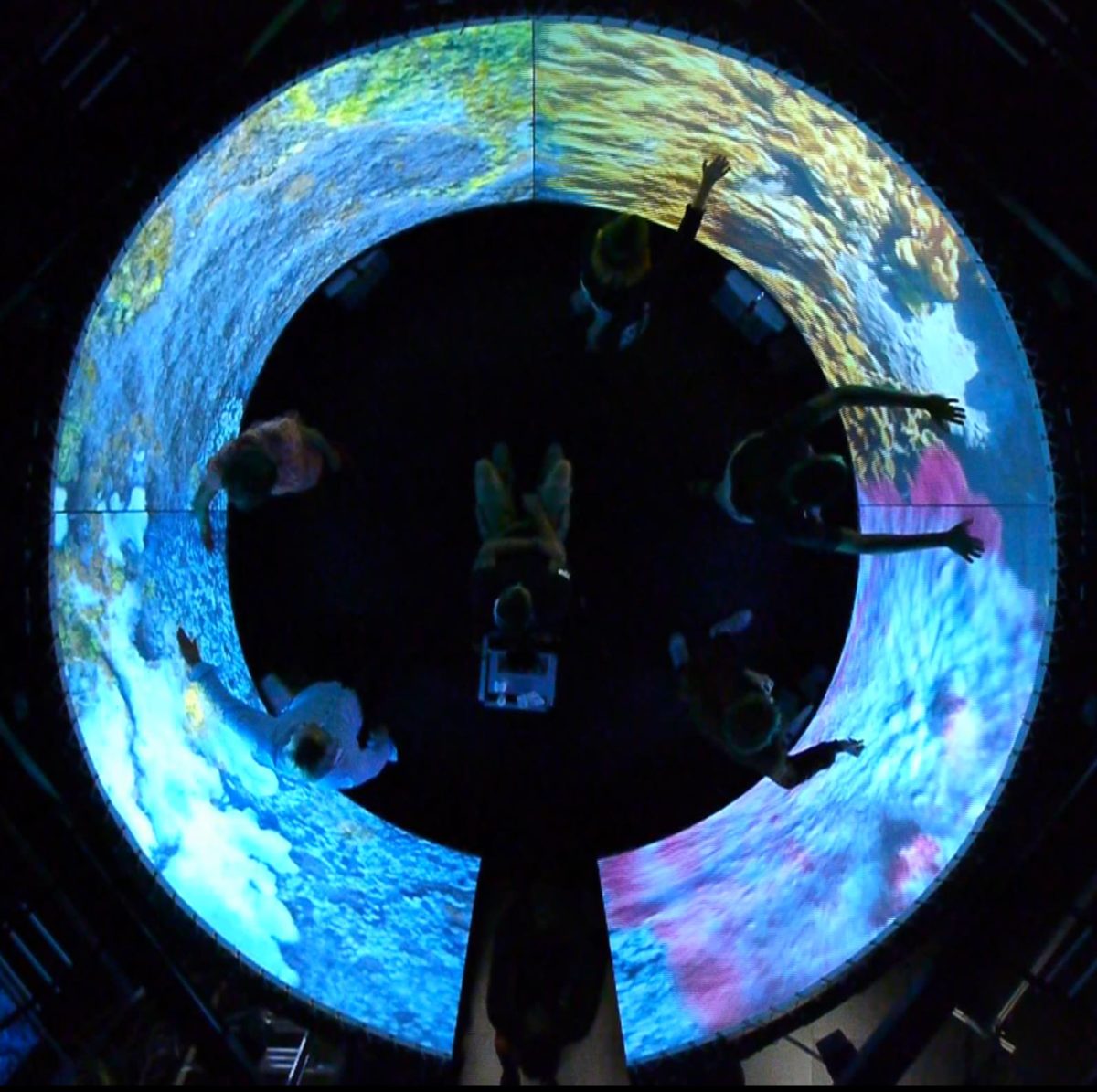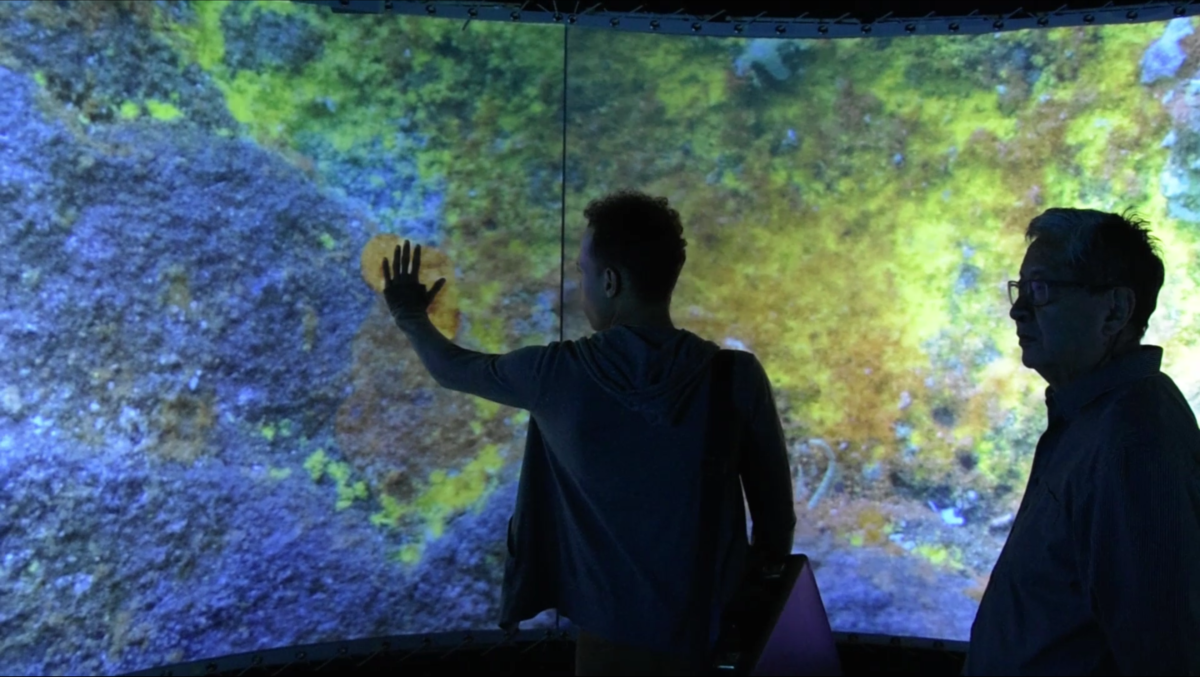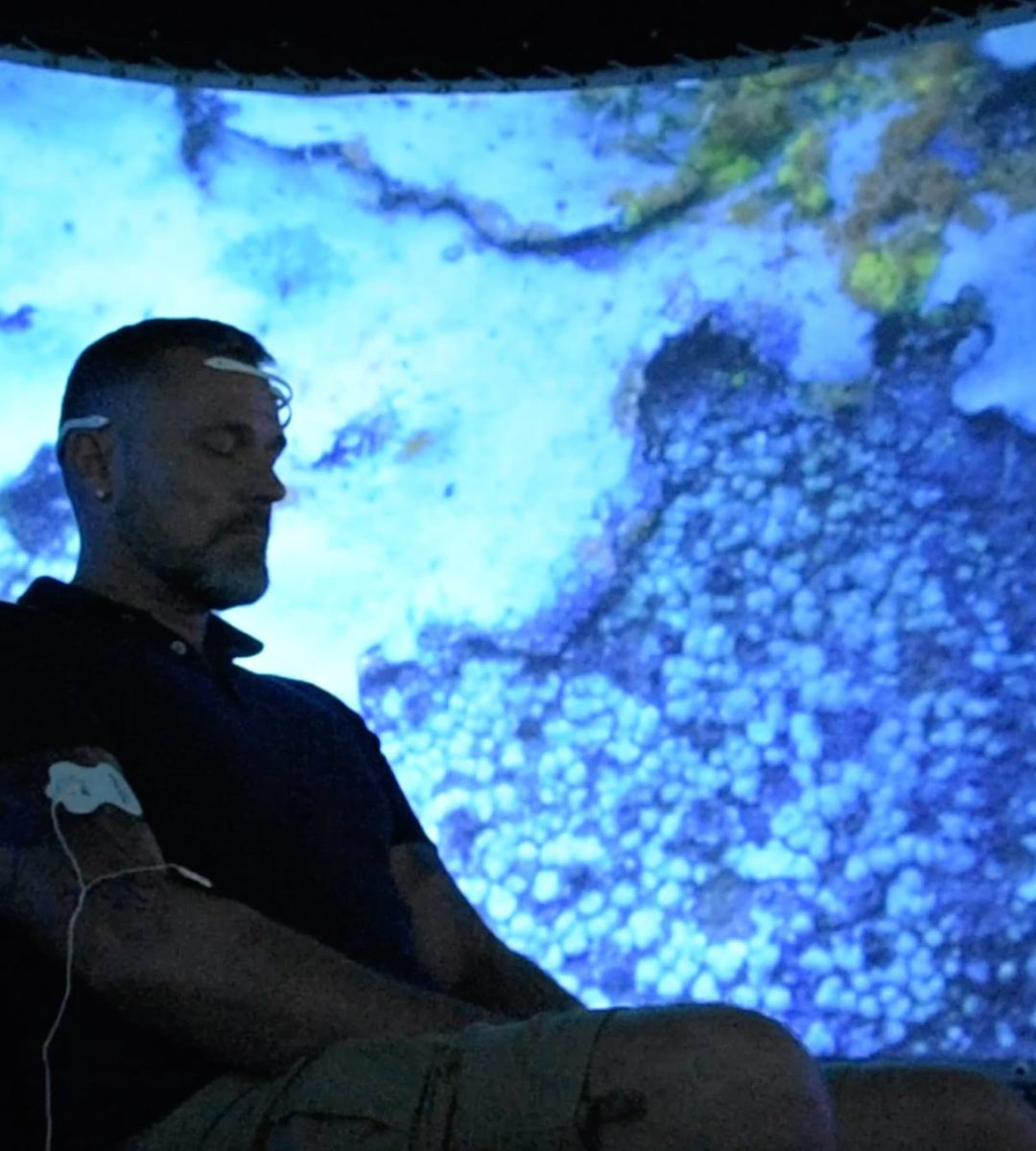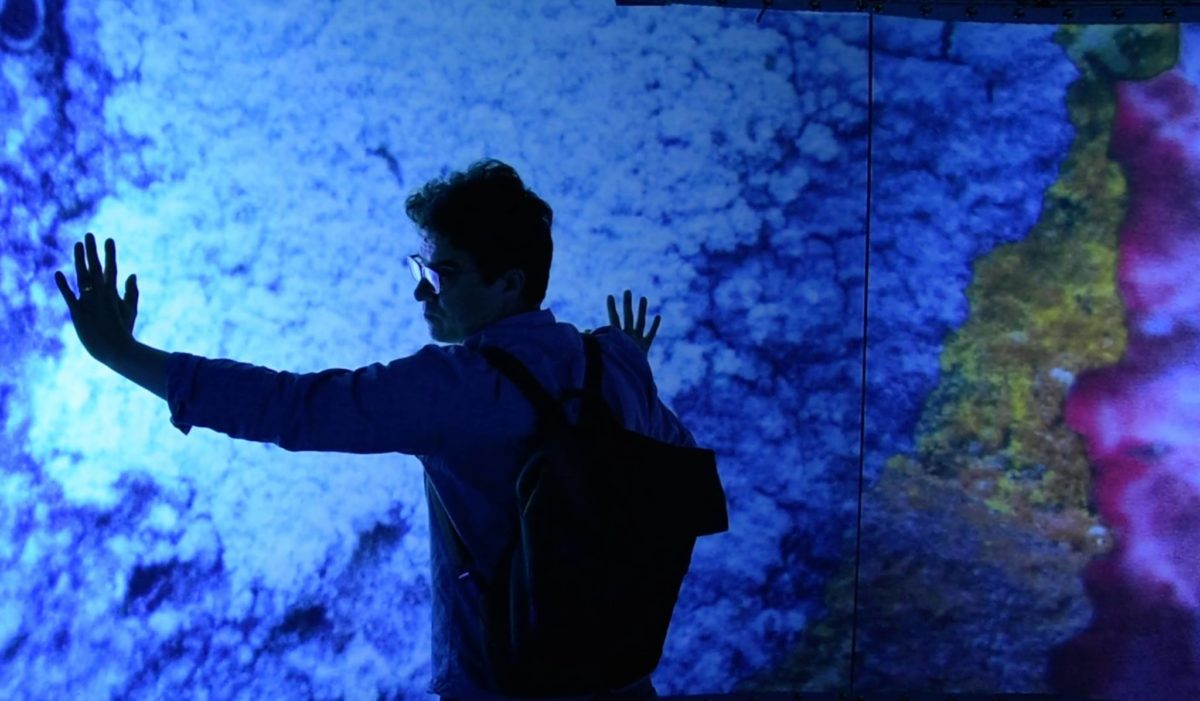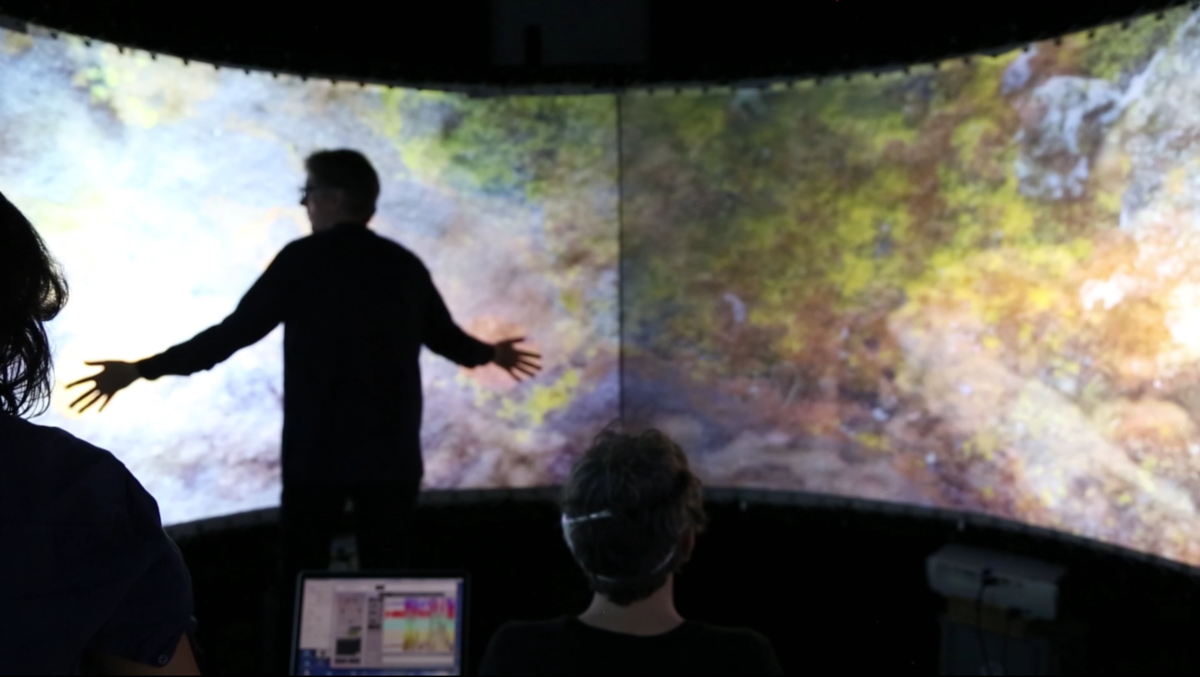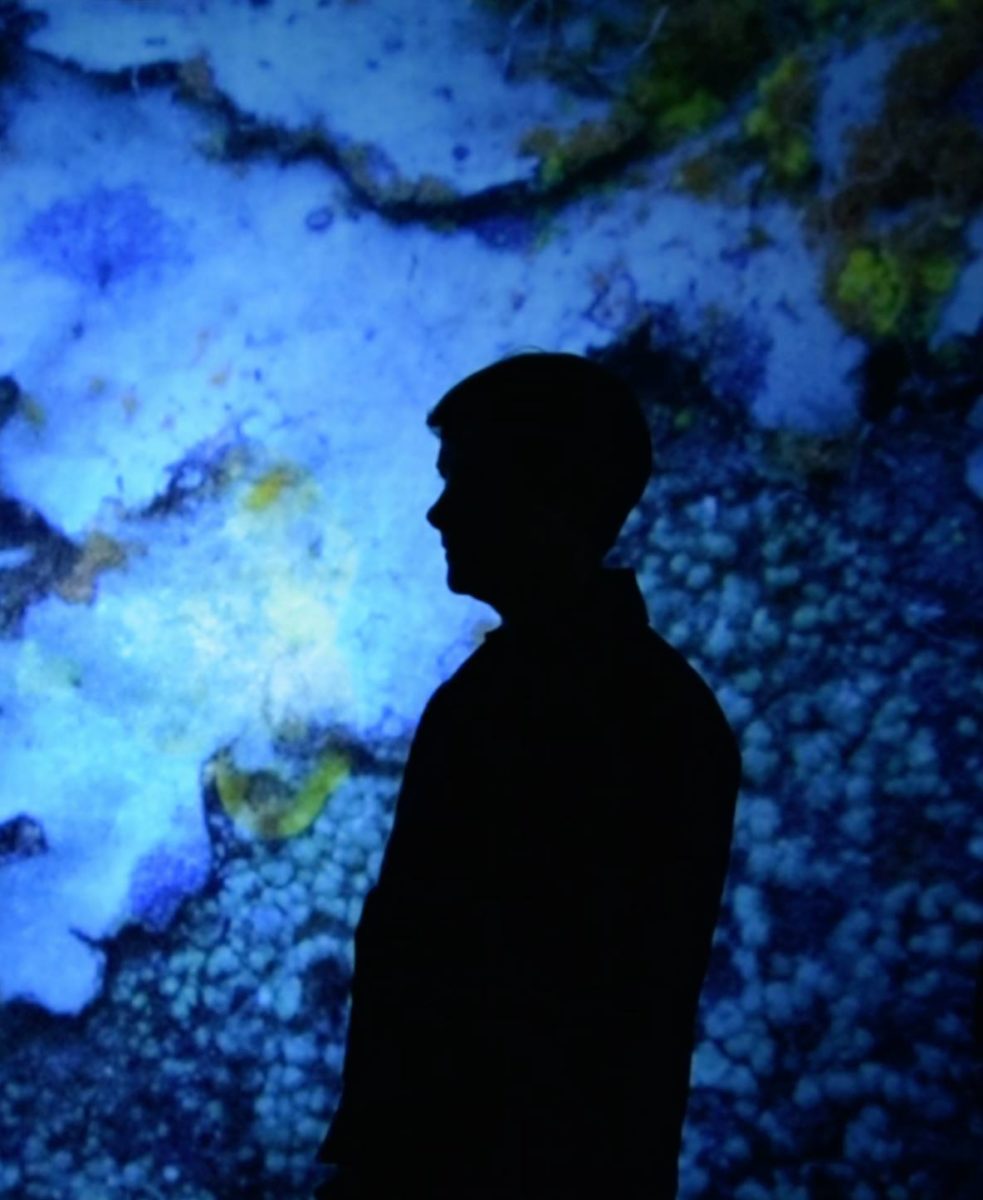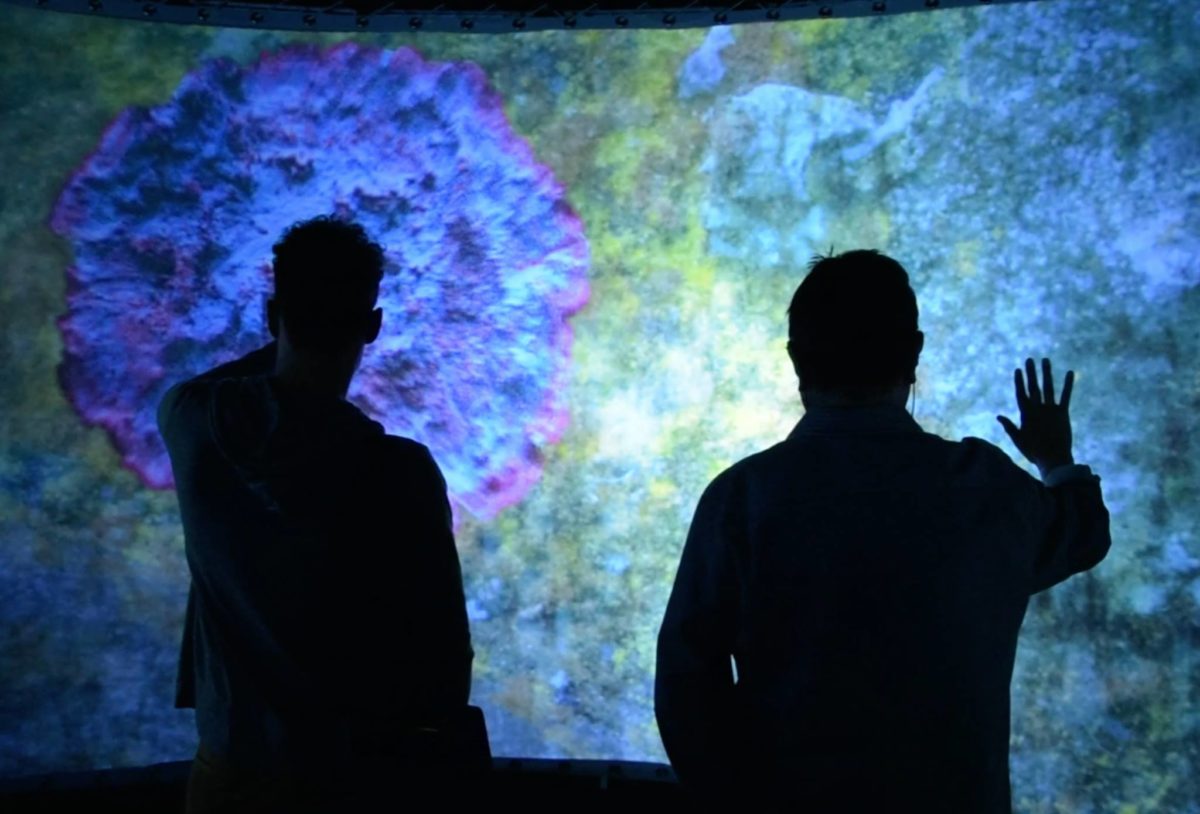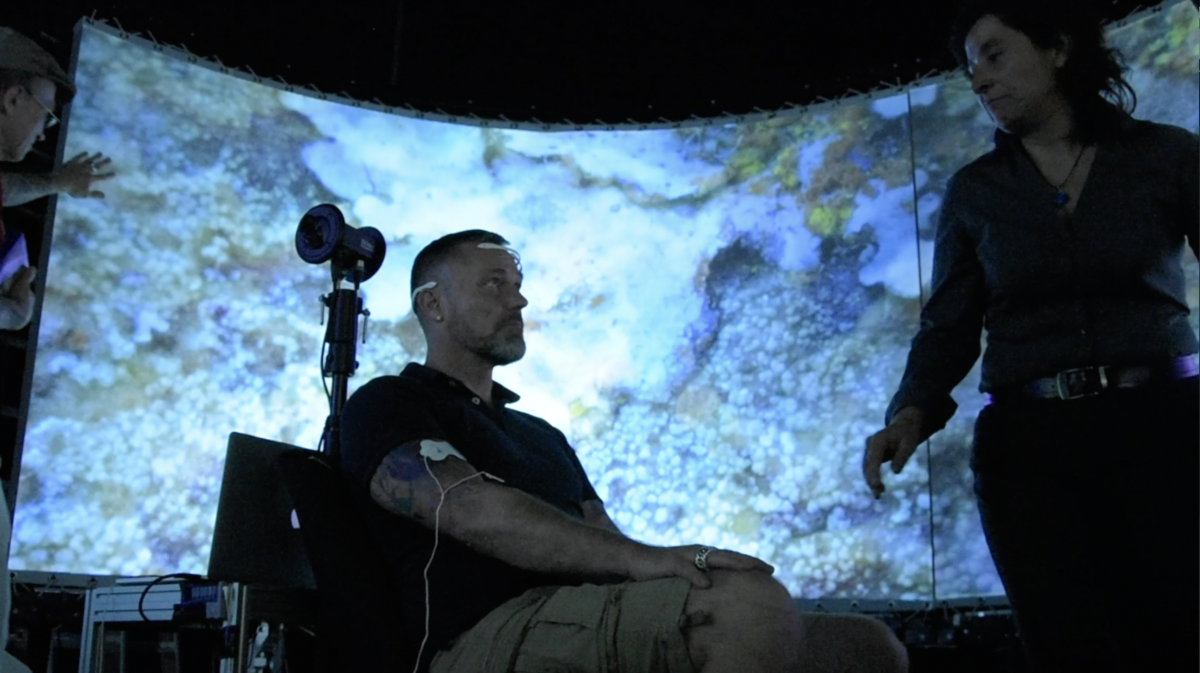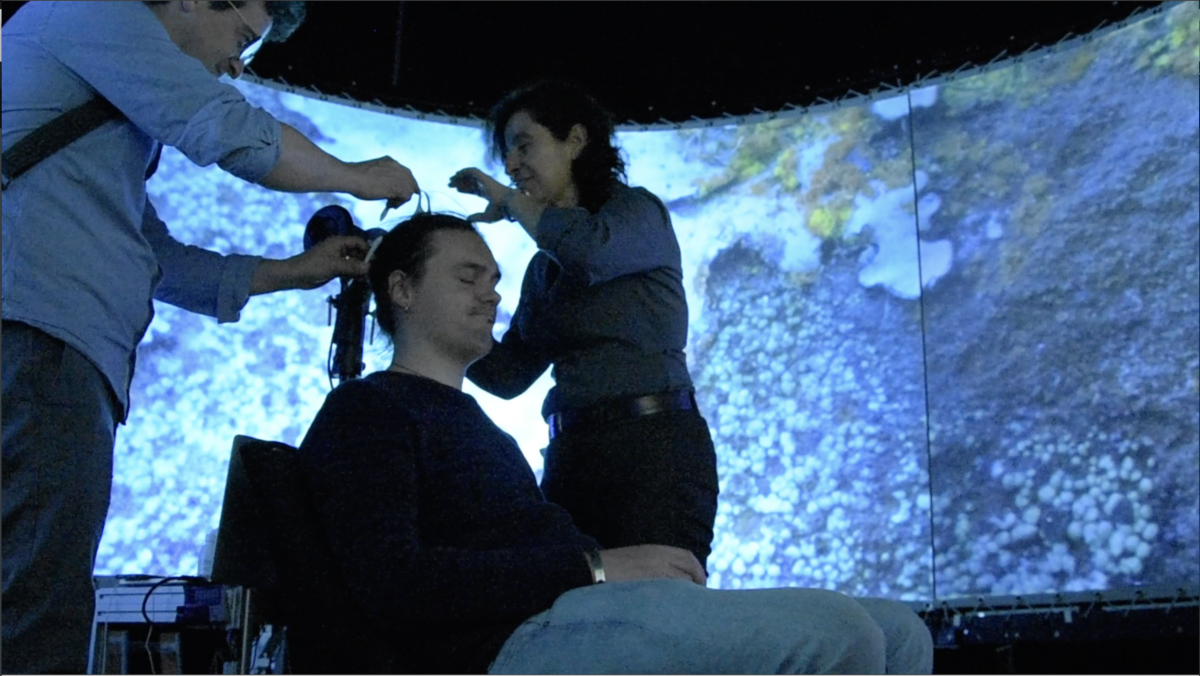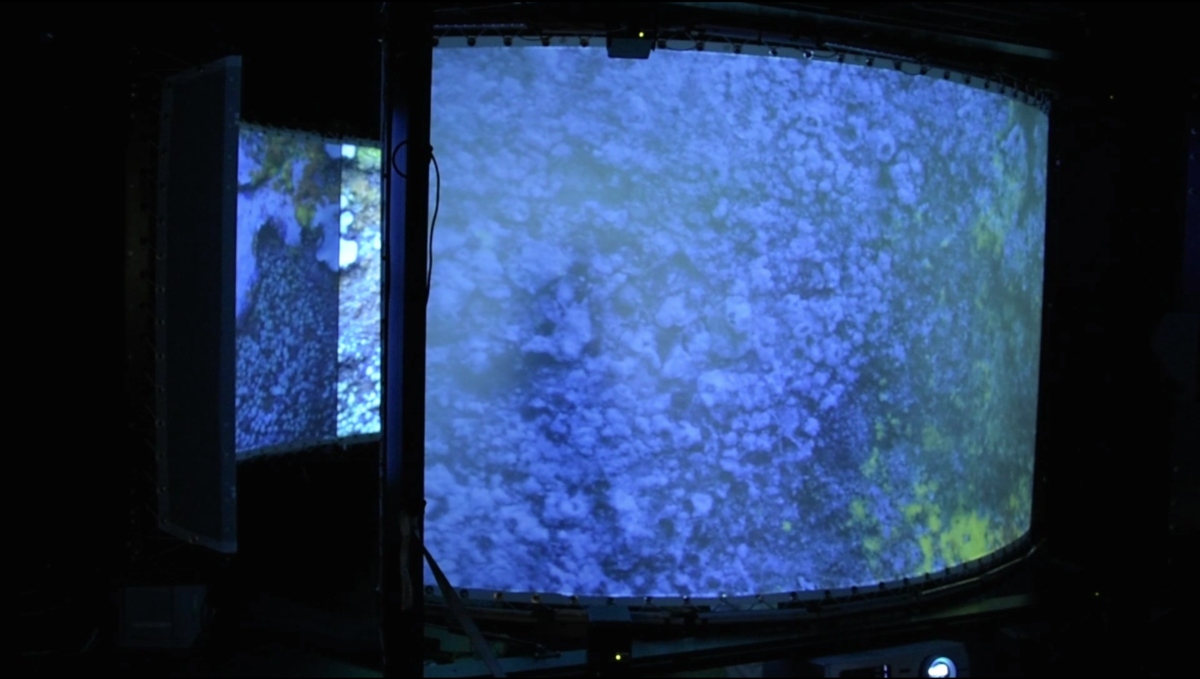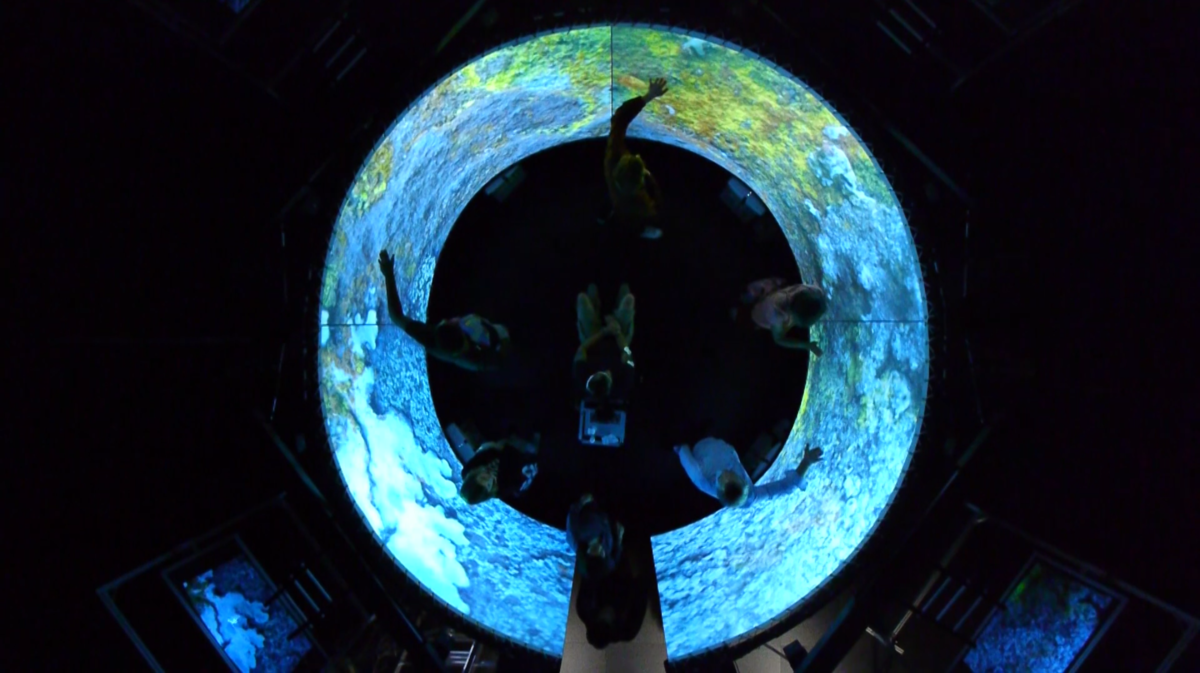Claudia Robles-Angel (2017-2018)
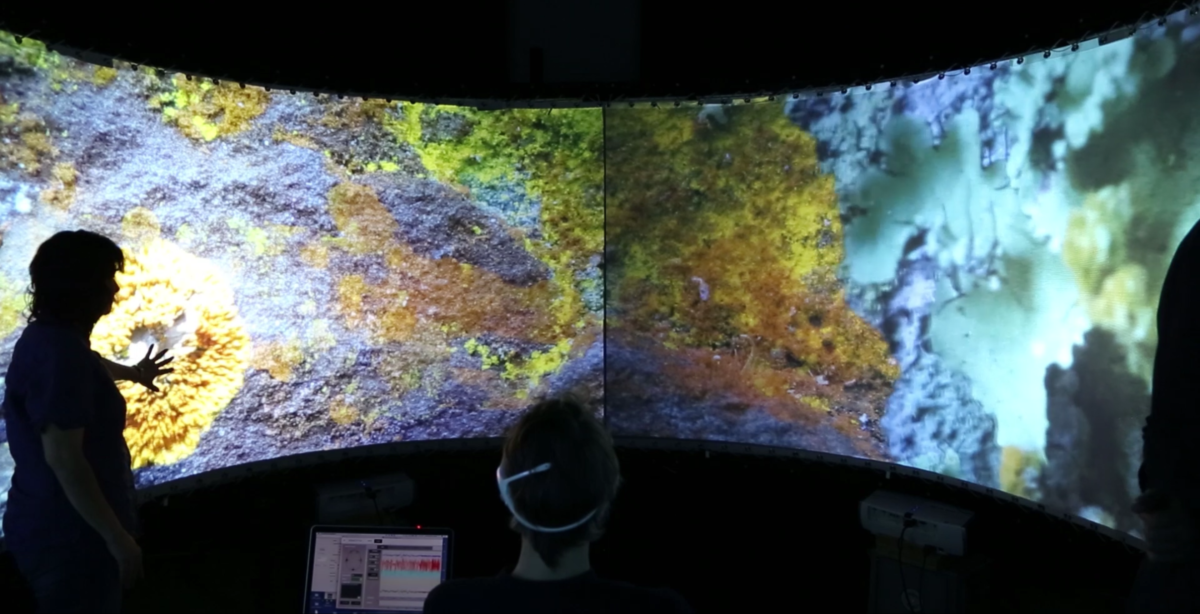
LEIKHĒN is an audiovisual installation, created for and during an artist in residence at the Immersive Lab (IL) at ICST Zurich. It is inspired by the composite plant of lichen (from Greek: leikhēn), which is the result of a hybrid partnership between a fungus and an alga. The installation is therefore a reflection upon the interaction and mutualistic relationship between two organisms, and how this union impacts on their behaviours inside a created audiovisual immersive space,
It consists basically of two types of participants: the central figure or host, sitting in the middle of the panoramic video space, whose brainwaves’ values are collected via an EEG interface in order to influence the sonic environment; the second type of participant is represented by the guest(s), visitors who, by touching the screens, influence the host’s emotional states through to the tactile transducers that are attached to the chair where the host is seated and consequently, also the audiovisual environment.
LEIKHĒN uses the values from the touch sensors from the IL by constantly sending them to a computer (using the Max software), where they are mapped into different sound frequencies and sent back to the host’s body through the afore-mentioned tactile transducers: as soon as the screens are touched by visitors, the host feels that touch or presence in his/her own body.
The host is therefore an intermediary, through whom the interaction between visitors and environment happens when visitors touch the screens: each touch sends data transformed in frequencies to the tactile transducers which are received by the host, influencing his/her emotional reactions and consequently, his/her mental processing (brainwaves). These values are captured by an EEG interface and transmitted to the computer, where different algorithms impact on the sonic aspects of the audiovisual environment, creating a feedback loop where the host is affected by the audience’s actions, whilst the audience is simultaneously affected by the host‘s reaction measured via his/her brainwaves. The screens become consequently the skin of the host.
Visually, as soon as guests touch the screen, a lichen appears on the touched point, and this lichen is amplified in size in direct connection to the duration of the touch, whereby the sonic environment reacts accordingly to the host’s reaction, highlighting the mutualistic relationship. The installation invites therefore guests to be aware of their behaviour towards the host’s habitat.
The acoustic part of the environment is composed with sounds from crickets and the visual with close-up images from diverse lichen species that together recreate a nature reserve.
Due to the fact, that different visitors interact with their own emotions, it is intended that a particular and distinctive audiovisual habitat/environment is created each time in either of the parts of the installation, as feelings, emotions, etc. are susceptible to change amongst diverse groups of people in different moments.
Claudia Robles-Angel
www.claudearobles.de
Artist Interview with Claudia Robles-Angel, where she talks about the piece’s ideas, concepts and makings (in English) – (recorded in May 2018).
